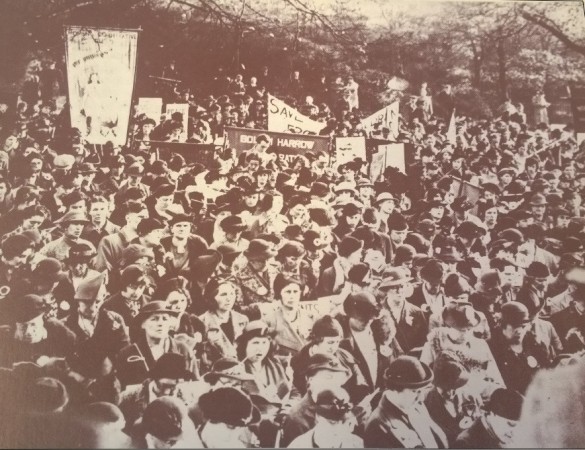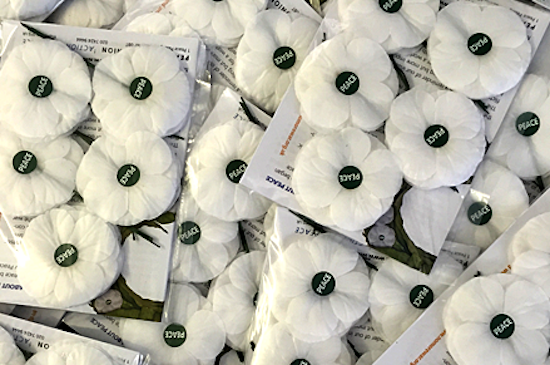This Remembrance Day peace activists from across the UK and abroad have marked the day by wearing white poppies. On 11 November they will gather at Tavistock Square in London at 12 noon where they will lay a wreath of white poppies.
The story of the white poppies began in 1933 when the members of the Women’s Co-operative Guild started wearing them to symbolise that they were against war and violence. Workers from the Co-operative Wholesale Society began making white poppies and the money gathered from selling them went to help war-resisters in Europe.
In 1936 the white poppy was adopted by the Peace Pledge Union which now coordinates the initiative. The Union was set up in 1934 to campaign against war and is now the oldest secular pacifist organisation in Britain.
Jan Melichar, co-ordinator at the Peace Pledge Union (PPU) explained what the white poppy stands for: “As far as we are concerned it’s a call to resist war and war making and all that comes with it.” He added that for the PPU, Remembrance Day is not only about remembering those who died, but also putting an end to war and violence. “It’s a very specific symbol, not a general symbol of peace,” added Mr Melichar.
Remembrance day and red poppies
Remembrance Day dates back to 1917 when King George dedicated 11 November as a day of remembrance for members of the armed forces killed during WWI. The red poppy was first associated with those who lost their lives in WWI after the famous poem In Flanders Fields written by Canadian surgeon John McCrae. At first the ceremony was an event dedicated to grieving families, but as time went by war became more distant and the military started taking over with marches and military music.
The Royal British Legion adopted the red poppy as a symbol for their Poppy Appeal in 1921, in aid of those serving in the British Armed Forces. The same year it ordered 1.5m poppies for 11 November and raised more than £100,000 by selling them. The Legion then decided to set up its own poppy factory, with disabled ex-servicemen making up the workforce.
“It was at that time that a lot of people started being concerned with the ceremony and began to feel that it was taken over by the very forces which had caused the war,” said Mr Melichar. “The Women’s Co-operative Guild were also part of that concern,” he explained, adding that the white poppy was a “natural reactive symbol”.
The women started wearing poppies to demonstrate their remembrance not by remembering war, but by pledging themselves to peace. Some chose to wear white poppies only, others were wearing both white and red poppies.
An alternative Remembrance Day
The first alternative remembrance events began in 1938 when a pacifist religious service was held in Regent Park in London followed by a march to Westminster and the laying of a wreath of white poppies at the Cenotaph. A year later World War II began and the November Armistice Day Silence was cancelled.

After WWII sporadic actions were occasionally taking place but it was only in the early ‘80s that the white poppies began to be sold again. Margaret Thatcher gave white poppy a boost in media coverage when she called it “a despicable little symbol” during Prime Minister’s Question Time.

However, the white poppy continues to be less known than the red ones. The PPU says that while it would like to promote them more, its resources are limited compared to the ones of the British Legion, which, it says, has consistently turned down requests to make the white poppies.
White poppy sales have increased considerably since the 1980s, says Mr Melichar. He adds that the number of white poppies distributed tends to vary depending on the situation of world politics. When conflicts are taking place across the world people buy white poppies to express their disapproval.
“This year precisely in London new batches of poppies are coming all the time”, added Jan Melichar.
PPU has sold over 70,000 poppies this year and due to overwhelming demand they currently cannot guarantee the delivery by Remembrance Day. The white poppy has gone beyond being a national symbol, having been sold in countries like Australia, New Zealand, Canada and Belgium.
Surpluses obtained from the sale of the poppies will go to fund peace education work, some of which can be seen at LearnPeace.